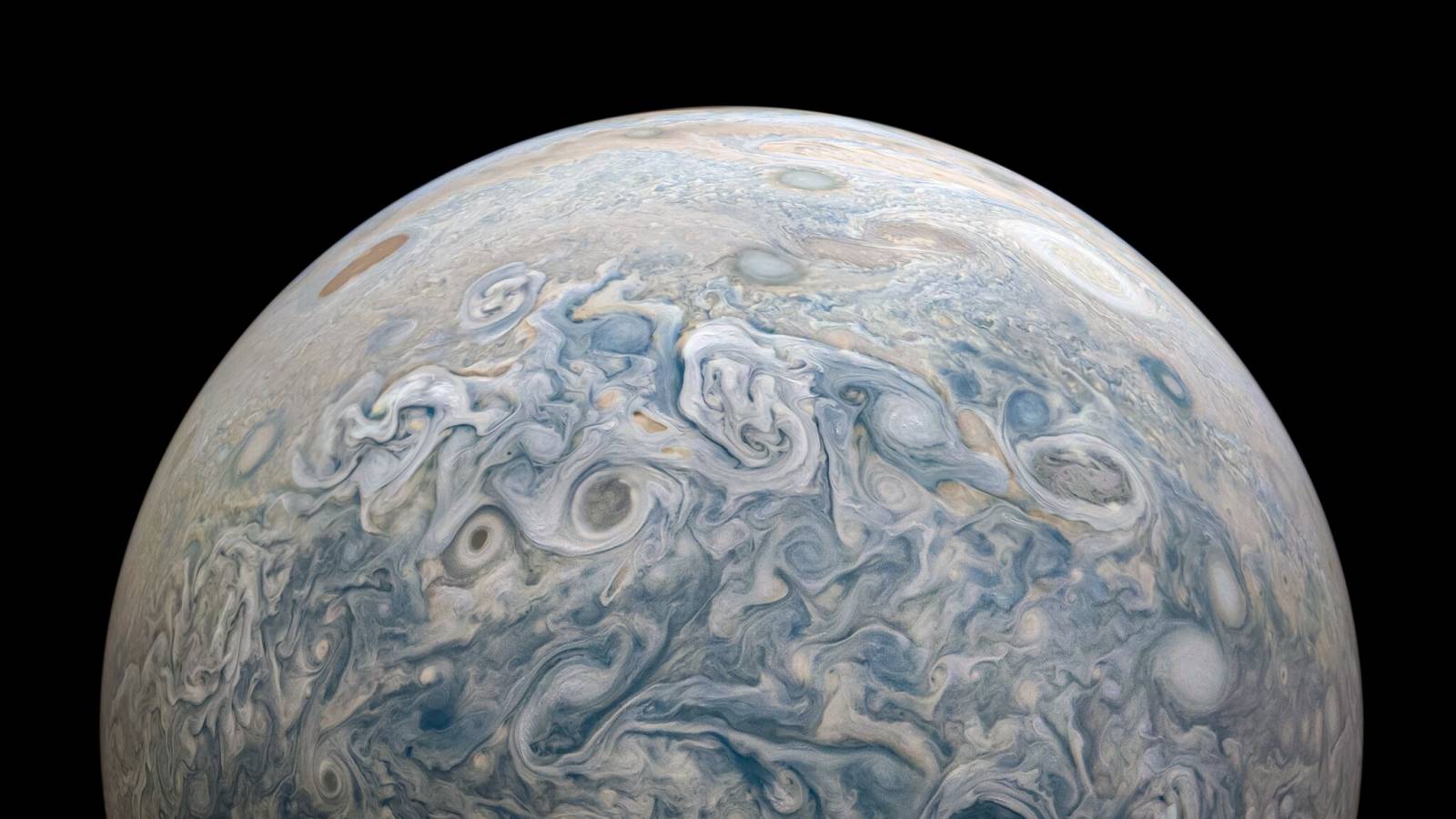Planeta Jupiter a avut o serie de imagini noi publicate de catre cei de la NASA dupa ce nava spatiala Juno a reusit sa inregistreze planeta din noi perspective, iar ele ne arata cat de frumos este corpul ceresc, si nu numai. Imaginile au fost facute la scurt timp dupa ce NASA a confirmat si faptul ca pe planeta Jupiter exista mult mai multa apa in atmosfera decat s-a crezut initial, ceea ce schmba complet felul in care cercetatorii privesc planeta in acest moment.
Planeta Jupiter in imaginea are prezentata emisfera nordica impreuna cu o buna parte din zona centrala, iar asa putem sa observam cam si cat de multa apa se afla in atmosfera sa. Puteti vedea deasemenea in atmosfera si acele furtuni care in unele cazuri se intind pe mii de kilometri, ele avand si durate de desfasurare extrem de lungi, cercetatorii analizandu-le de foarte multa vreme pentru a vedea cum anume se formeaza, dar si de ce dureaza atat de mult.
Planeta Jupiter: Noi imagini SPECTACULOASE facute de NASA
Planeta Jupiter a avut maginile inregistrate acum aproape 2 saptamani de catre sonda Juno, si dupa ce NASA le-a procesat cu mare atentie, le-a publicat pentru a ne arata din nou cat de frumoasa este planeta. Cei de la NASA au inceput sa analizeze mult mai atent planeta Jupiter dupa ce au descoperit ca exista mai multa apa in atmosfera decat se creta, sonda Juno avand o orbita eliptica de 53 de zile in jurul planetei, si inregistreaza imagini din toate unghiurile.
A mosaic from @NASAJuno images PJ25_25 and PJ25_27 obtained on Feb 17, 2020. Approx true color/contrast and enhanced versions. The oval left of center is known as NN-WS-4. It is about 7000 km long in the east-west direction and is at planetographic latitude ~42 degrees north. pic.twitter.com/EDlNngkwTe
— Björn Jónsson (@bjorn_jons) February 24, 2020
Planeta Jupiter are in imaginea de mai sus prezentate si multe dintre ciclonurile care acopera planeta in acest moment, unul cu diametru de cateva mii de kilometri fiind iconic pentru imaginea cunoscuta de toata lumea cu planeta. Sonda Juno nu a fost gandita pentru a intra in atmosfera de pe planeta Jupiter, ceea ce s-ar putea intampla cu alte nave pe care NASA le-ar putea lansa, insa pana atunci vedem doar aceste imagini, impresionante.
— Seán Doran (@_TheSeaning) February 24, 2020
Planeta Jupiter este cea mai mare din sistemul nostru solar, si explorarea sa ar putea fi unul dintre obiectivele pe care NASA si le-ar putea propune in acest secol, pe masura ce tehnologia va avansa.






















